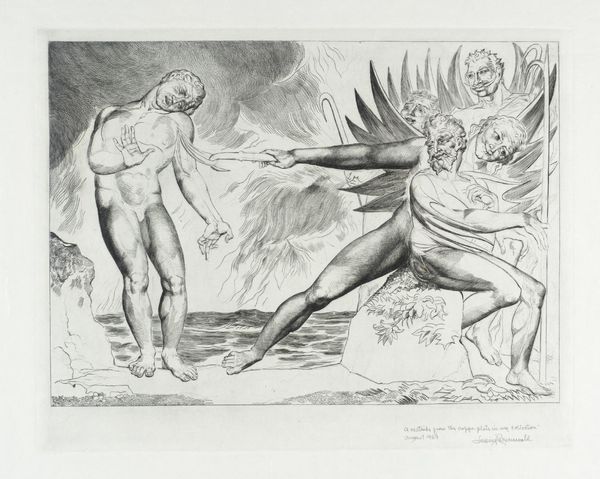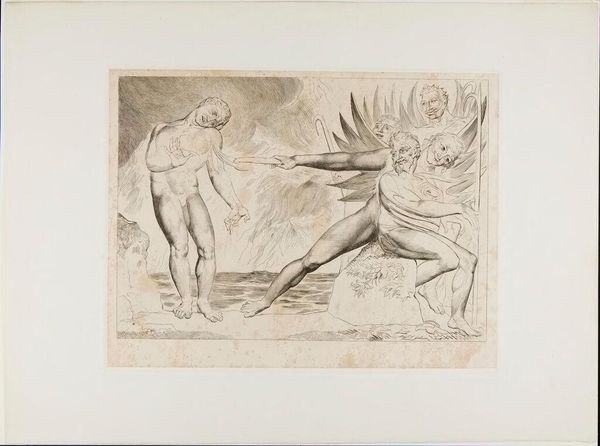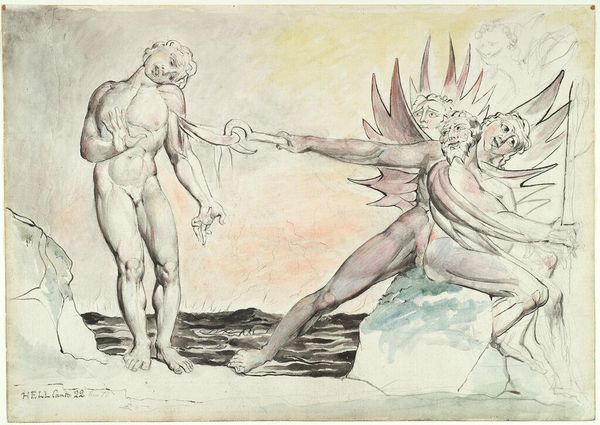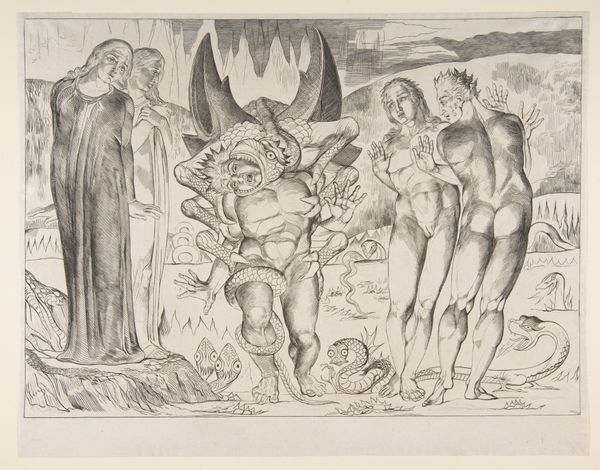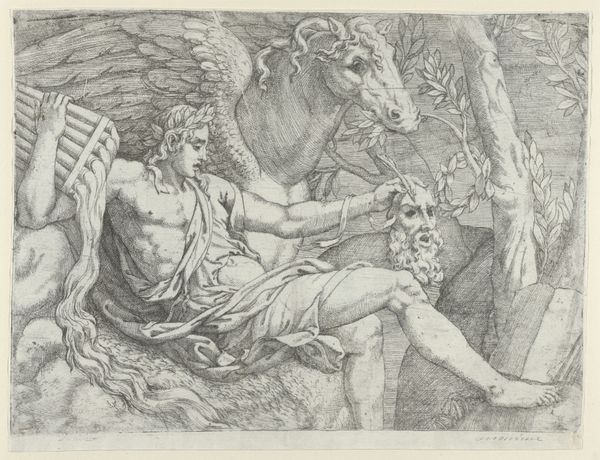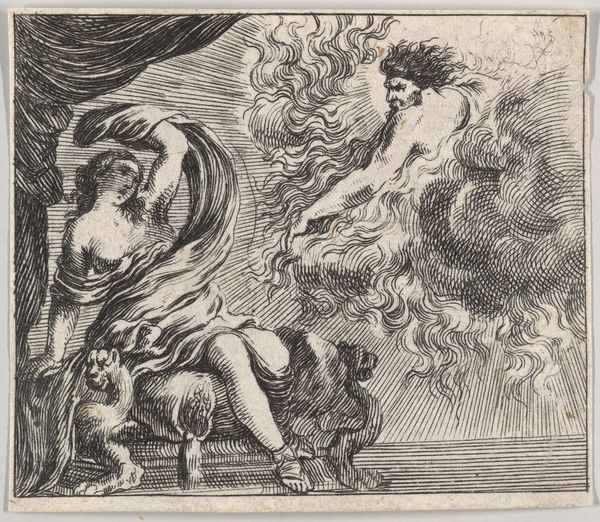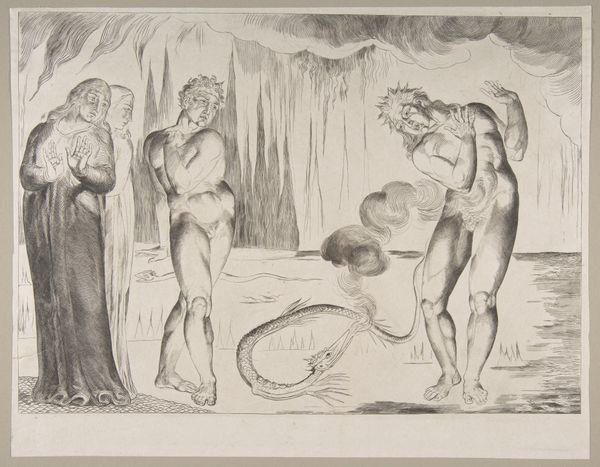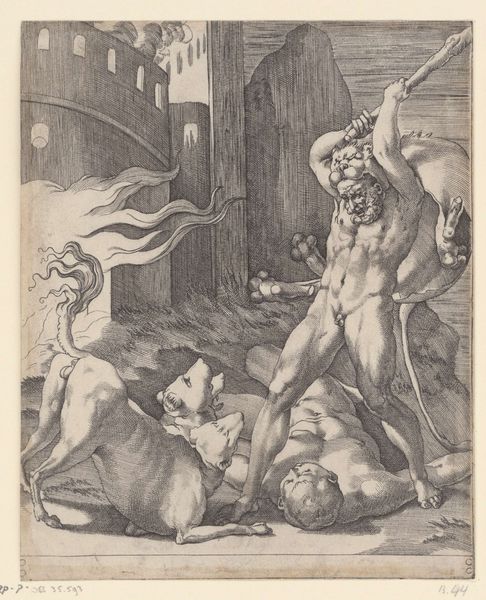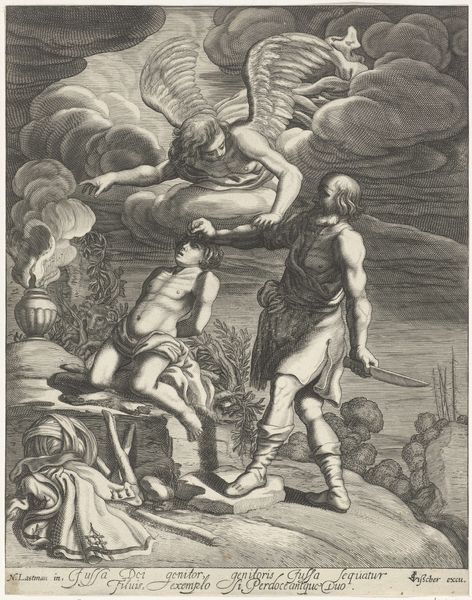
The Circle of Corrupt Officials: The Devils Tormenting Ciampolo 1820 - 1832
0:00
0:00
drawing, print, etching
#
pencil drawn
#
drawing
#
allegory
# print
#
etching
#
figuration
#
pencil drawing
#
romanticism
#
history-painting
#
nude
Dimensions: plate: 9 3/8 x 13 1/4 in. (23.8 x 33.7 cm) sheet: 10 9/16 x 13 9/16 in. (26.8 x 34.4 cm)
Copyright: Public Domain
Editor: So, this is William Blake's "The Circle of Corrupt Officials: The Devils Tormenting Ciampolo," created between 1820 and 1832, using etching and engraving. The scene is quite stark and brutal, with those devils seeming particularly vicious. What do you make of Blake’s social commentary here? Curator: It's fascinating to consider this image within the social and political context of Blake’s time. He was deeply critical of corruption within institutions. Think about it: What happens when artists directly critique power, and how is that critique received by the institutions they target, or perhaps by those that collect or exhibit their work? Editor: That’s a great point. There is the political statement and then the consumption of it, like this very display in the Met! It’s complex. I guess that dichotomy gives the image its power. Is Blake positioning art as a moral compass in an immoral world? Curator: Absolutely. But think also about who gets to decide what is "moral" and "immoral." Blake saw the Church and the State as instruments of oppression. How does he use the visual language of torment – the etching technique itself, the exaggerated figures – to convey a sense of moral outrage, and what effect do you think he aimed to create for viewers of his time, versus viewers of our time? Editor: The suffering is palpable. The torment enacted by those devils, that long pointed stake! Do you think that Blake saw art as a means of exposing these kinds of harsh truths? Curator: Without a doubt. He sought to use his art to challenge accepted norms, provoke thought, and even inspire change. This piece asks us to think about the very nature of power, who wields it, and how it’s used, doesn't it? What kind of legacy does this etching leave us to ponder about political power? Editor: This makes me think a lot more about the function of the museum as an arena of power as well as aesthetic appreciation. Curator: Precisely. It's a testament to the enduring power of art to question, to challenge, and to incite critical thinking across time.
Comments
No comments
Be the first to comment and join the conversation on the ultimate creative platform.
